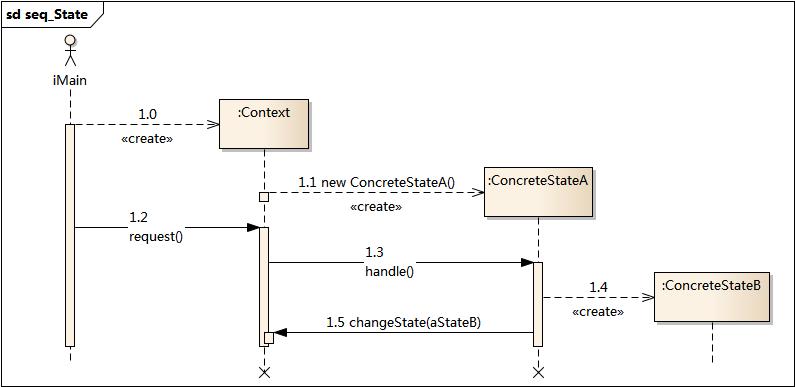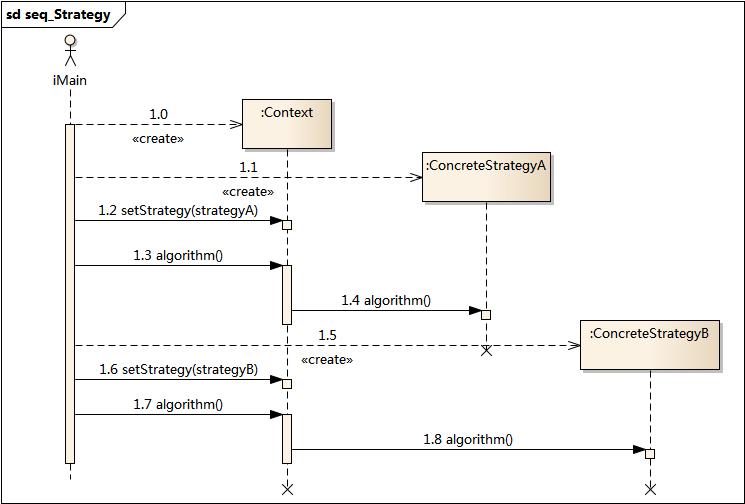区别主要体现在行为上,而不是结构上,所以,看时序图就能很好的看出两者的区别。
状态模式

看1.4,状态B是状态A创建的,也就是由系统本身控制的。调用者不能直接指定或改变系统的状态转移
所以,状态是系统自身的固有的,调用者不能控制系统的状态转移。比如,一个请假单有“部长审批”-“经理审批”-“审批通过”-“审批不通过”等状态,请假者没有办法将一个部长都还没审批完的请假单提交给经理,这个状态转换只能系统自己完成。
策略模式

看1.5,策略B是调用者指定的,系统自身并不能指定或改变策略。
所以策略是外界给的,策略怎么变,是调用者考虑的事情,系统只是根据所给的策略做事情。这时系统很像是一台电脑,根据指令执行动作,打一鞭子滚一滚。
知识检测
小明中国出发到日本再到美国去旅行,在不同的国家都要做两件事,问候和打招呼,怎么做取决于他在哪个国家。(就是编程时经常碰到的多语言问题了)根据需求,请问该使用哪种模式?开发者写了下面的代码,请问下面的代码是状态模式还是策略模式?
public class GreetingContext {private Country country;public GreetingContext(Country country){this.country = country;}public void changeCountry(Country country){this.country = country;}public void sayHello(){country.sayhello();}public void greet(){country.greet();}}//国家接口
public interface Country {void sayhello();void greet();
}//中国
public class China implements Country {public void sayhello() {System.out.println("你好!");}public void greet() {System.out.println("握手!");}
}//美国
public class America implements Country {public void sayhello() {System.out.println("hello!");}public void greet() {System.out.println("kiss");}
}//调用
public class Client {public static void main(String[] args){GreetingContext context = new GreetingContext(new China());context.sayHello();context.greet();context.changeCountry(new America());context.sayHello();context.greet();}
}
参考:状态模式和策略模式的比较
图片来自:图说设计模式








 混合使用的时候的注意事项)


 可变参数)


-Go语言中文社区...)

)


